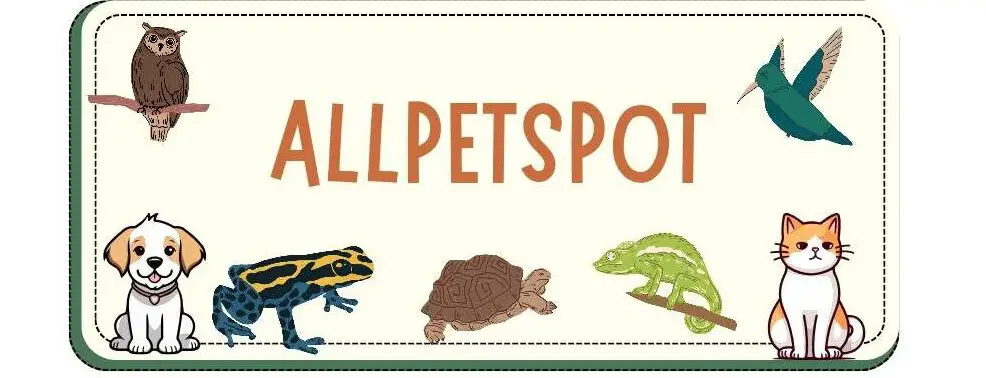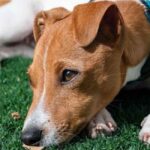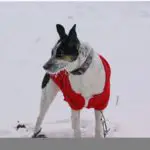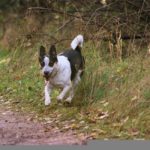Pug behavior problems are exactly what we will be discussing in this post, so read through!
After reading this article, you should have a better idea of what to expect from having a Pug.
I’ll also discuss some typical remedies to these issues, so read on to discover more about pug behavior issues.
Pug Behavior Problems
Pugs are a popular and charming tiny breed of dog, but they have a few behavioral issues, including begging, housetraining difficulties, leaping on humans, separation anxiety, excessive barking, destructive chewing, biting, and nipping.
Pugs are sensitive to change and require a stable environment in which to survive.
This means you should start training your Pug as soon as possible, so it becomes second nature later.
You should also find out whether the dog has any health issues so that you can treat any warning signals before they become more serious.
The following are some common Pug behavior problems to be aware of:
1. Separation anxiety
Pugs can acquire separation anxiety when they are separated from their owners for a prolonged length of time or when they are left alone unsupervised for an extended length of time.
Separation anxiety in Pugs can manifest itself in a variety of ways, including biting, nipping, barking, self-isolation, and chewing.
Separation anxiety is caused by leaving Pugs alone at home, which may be avoided by giving a friend or another pet.
Helpful Tips to Pug separation anxiety
- As soon as possible, you should bring in a second pet.
- Make sure there are lots of fresh plush and amusing toys to keep the puppy entertained.
- Allow plenty of time for rest and relaxation, as well as exercise.
- Begin a new, appropriate crate training program for your dog.
- Make an appointment with a behaviorist for your pet.
- Consider hiring a dog sitter.
- Teach them to leave you alone at home and to refrain from following you everywhere.
To understand more about Pug separation anxiety and preventing it, check this article.
2. House training difficulties
The act of educating a domesticated animal who lives with its human owners in a house to defecate outside or in a designated indoor spot rather than following its innate behavior of defecating at random within the house is known as house-training.
Pugs are notoriously tough to housebreak, in my experience. Expect to spend two to three months training in a container.
Pug may make mistakes even after you’ve accomplished your potty training.
This is perhaps one of the most prevalent pug behavior problems.
Tips For House Training Pugs
- During housetraining, avoid overfeeding.
- During the house-training process, don’t keep your Pug on a leash when you’re not around.
- During the house-training process, provide your Pug a choice of areas to relieve himself.
- During the housetraining procedure, take your Pug to the restroom on a regular basis before night.
- Potty training should start the day your Pug is delivered.
- Do not yell or hit your Pug if he makes a mistake.
- During the house-training procedure, don’t make any significant changes to your Pug’s regular routine.
- During the housetraining process, feed your pug at the same time and in the same manner.
- Make the toilet as accessible as feasible during the housetraining procedure and thereafter.
3. Constantly begging
Pug has enticing expressions that are impossible to ignore as the owner, inciting pleading.
Begging is a horrible habit, but unfortunately, many dog owners promote it by feeding their pets while they eat.
Weight gain, digestive problems, and even persistent diarrhea are all potential side effects.
The most basic strategy for preventing this obnoxious behavior is to never endorse it in the first place.
Tips to stop Pug from begging
- When the dog is begging, don’t stare at him.
- When the dog is begging, don’t talk to him.
- If he attempts to pounce on you, twist and turn away.
- At the same time, feed your pug and consume your meal.
- Instead of sitting at the table and begging for food, teach your dog to do something else.
- While you eat, put your dog in his room.
- When it’s time to dine, place the bowl near the table, so your dog believes he’s dining with you.
4. unwanted Barking at odd things or time
Pugs are a naturally non-aggressive little dog breed that has never been known to attack other dogs or children since they were created to be human companions.
Aggression in Pugs can be caused by a variety of factors including poor socialization, fear, anxiety, possessive behavior, and a lack of training or behavioral guidance on the side of the owner.
Pugs can bark excessively, and one of the best methods to prevent excessive barking is to properly socialize your pug as soon as possible.
Tips to stop excessive barking in Pug
To get your dog to quit barking, teach him a new behavior.
Select a spot that can be seen from the front entrance.
Train them to lie down and stay put when you say, “Go to your place.”
This will keep them occupied as they wait to be greeted and will keep them calm.
Bring a reward at the door and invite a friend in, but only open it when your dog is calm.
They’ll learn to relax if they desire that treat if you do it frequently enough.
5. Chewing valuables when bored
Boredom depression, irritation, anxiety, tension, and loneliness are the most common reasons for destructive chewing in Pugs, all of which can be precipitated by separation anxiety.
Something is awry if your Pug is eating everything he sees. It might be a sign of separation anxiety.
According to some, spray areas where you don’t want your Pug to chew or hide your valuables and electronic wiring.
However, the fact is that you are oblivious to your Pug’s requirements.
Rather than spraying or concealing things, why not figure out what’s causing the destructive nibbling and solve it once and for all.
If you want to keep your Pug away from your valuables, buy him something to gnaw on.
Tips to stop pugs chewing
- Allow your Pug to never be bored or lonely.
- Keep your Pug occupied at your side at all times.
- Invest in a variety of chewing and interactive toys for your child.
- If you can’t stop chewing, spray your furnishings.
- More mental stimulation is required.
- Make sure your Pug gets enough of exercise.
- Dog-proofing your home is a good idea.
6. Overly selective of what to eat
Some Pug pups have a good idea of what they like to eat, but they won’t tell you because they can’t communicate.
Pugs have rotating taste buds, which might cause them to eat only a few bites or refuse to eat at all.
The majority of owners are concerned about this, although it is a manageable tendency.
A Pug could be able to sense a protein shortage in a dish and refuse to eat it.
Pugs are notorious for being picky eaters since they are aware that eating may bring them pain.
Tips to control over selection of what to eat
- Any meal that is proven to be successful should be kept.
- If necessary, make the dish more appetizing.
- Consider what you’re putting on the table.
- Maintain a timetable that suits your needs.
- Switching to a grain-free choice is a good idea.
- Use the smallest serving sizes possible.
- If you have any medical concerns, speak with your veterinarian.
- Stop giving your pug too many different types of food at once.
Always add fruits and veggies to your Pug diet schedule, any of the following can work:
7. Play aggression issues
One of the most common and well-known types of Pug behavior issues is this.
Pug’s play aggression manifests itself in a variety of ways, including growling, snarling, flashing fangs, lunging, and biting.
It’s fairly common among Pugs since their owners always tolerate or encourage it because it’s the right thing to do.
Pugs’ play aggression develops over time and, if not addressed, may cause severe issues with your children and your dog.
Tips to help pugs with play aggression
- Begin by playing quietly with your dog.
- The socialization of your dog should begin at a young age.
- Arrange for play dates with other pups and well-behaved adult dogs who can teach your puppy proper manners.
- Hormone-driven aggressiveness can be reduced by neutering or spaying your dog.
- Praise your dog when he or she engages in friendly play.
- Include a toy in the equation.
- When a line is crossed, always stop your dog from playing.
- If you have a loud Pug, stay off the floor.
- Encourage your pug to avoid begging for attention in an aggressive manner.
- Teach compliance strategies and expectations.
- The only way to go is to use positive reinforcement.
8. Overly seeking for attention
While this may be an issue for some, others may find it humorous to have their Pug following you around the home begging for love.
Pugs are no exception when it comes to barking, biting, or nipping when they demand attention.
Pugs are not for you if you don’t want a snuggly dog or one who demands attention.
Because pugs were bred specifically to be companion dogs that spend their days with their owners.
Helpful tips
Simply build a pattern for them so that they can get what they need without having to ask or while you are away.
They will not follow you around like flies if you keep them engaged with a variety of activities.
Read more: Can Pugs Be Left Alone (6 Dangers & 10 Helpful Tips)
9. Unnecessarily Growling
Growling can be a symptom of anxiety or aggressiveness in small dogs like pugs.
A Pug will most likely exhibit both of these traits, prompting them to snarl at everyone in their vicinity.
Reduce their growling to make them more approachable, pleasant, and less likely to do harm to humans.
It may appear charming or fun at first, especially with little dogs like Pugs, but it can irritate neighbors and cause problems.
It’s not a good idea to encourage dogs to howl. Keep a close check on your dog to make sure he’s as quiet as possible.
Tips to Pugs unnecessary growling
- The importance of early and proper socialization cannot be overstated.
- Developing and maintaining a daily routine.
- Any and all sources of worry should be eliminated.
- Allow your dog to be alone when he or she desires it.
- Please don’t abuse your Pug in any way.
- There is a need for more mental stimulation.
- Consult your Pugs veterinarian for medical examinations.
Read more: Do Pugs Bark A Lot (8 Bark Triggers & Tips).
10. Pug Dominance Issues
Pugs are headstrong canines that will want to become the dominant dog if given the opportunity.
This is why it’s critical to get them started on training as soon as possible.
You must demonstrate that you are in command and that they must follow your instructions.
Tips to resolving Pug Dominance Issues
Early training and socialization will help you control your Pug.
Establish yourself as the pack leader as early as possible.
Set rules, limitations, and boundaries for your Pug as early as possible.
With the information provided on this page, we strongly hope your concerns about pug behavior problems were resolved!
Read more about: Are Pugs Aggressive (9 Causes & Control Tips).










